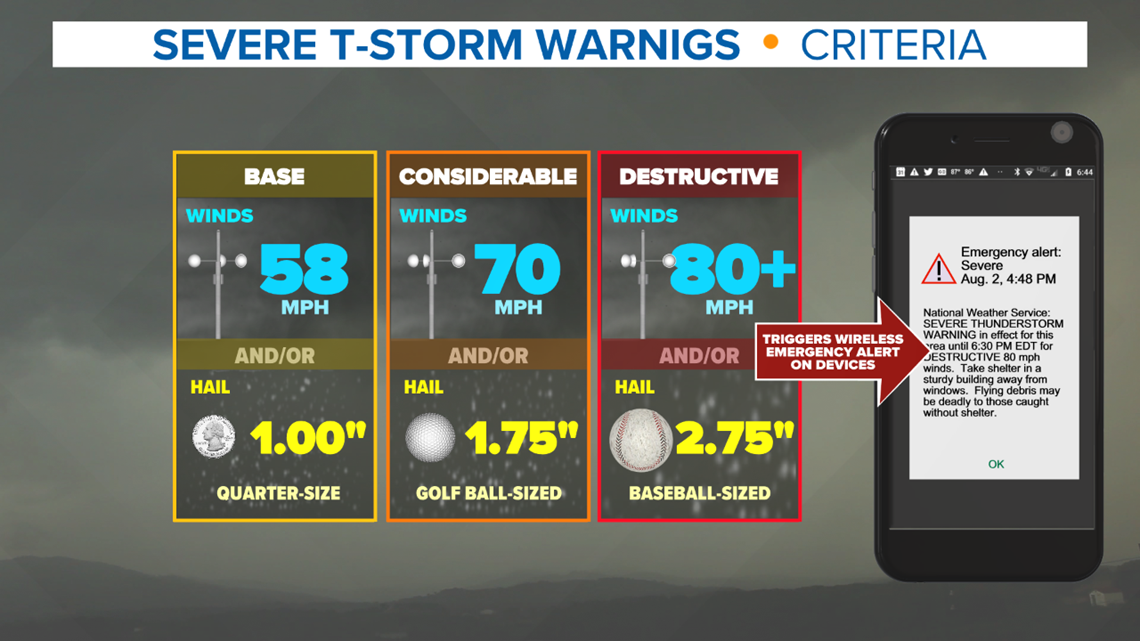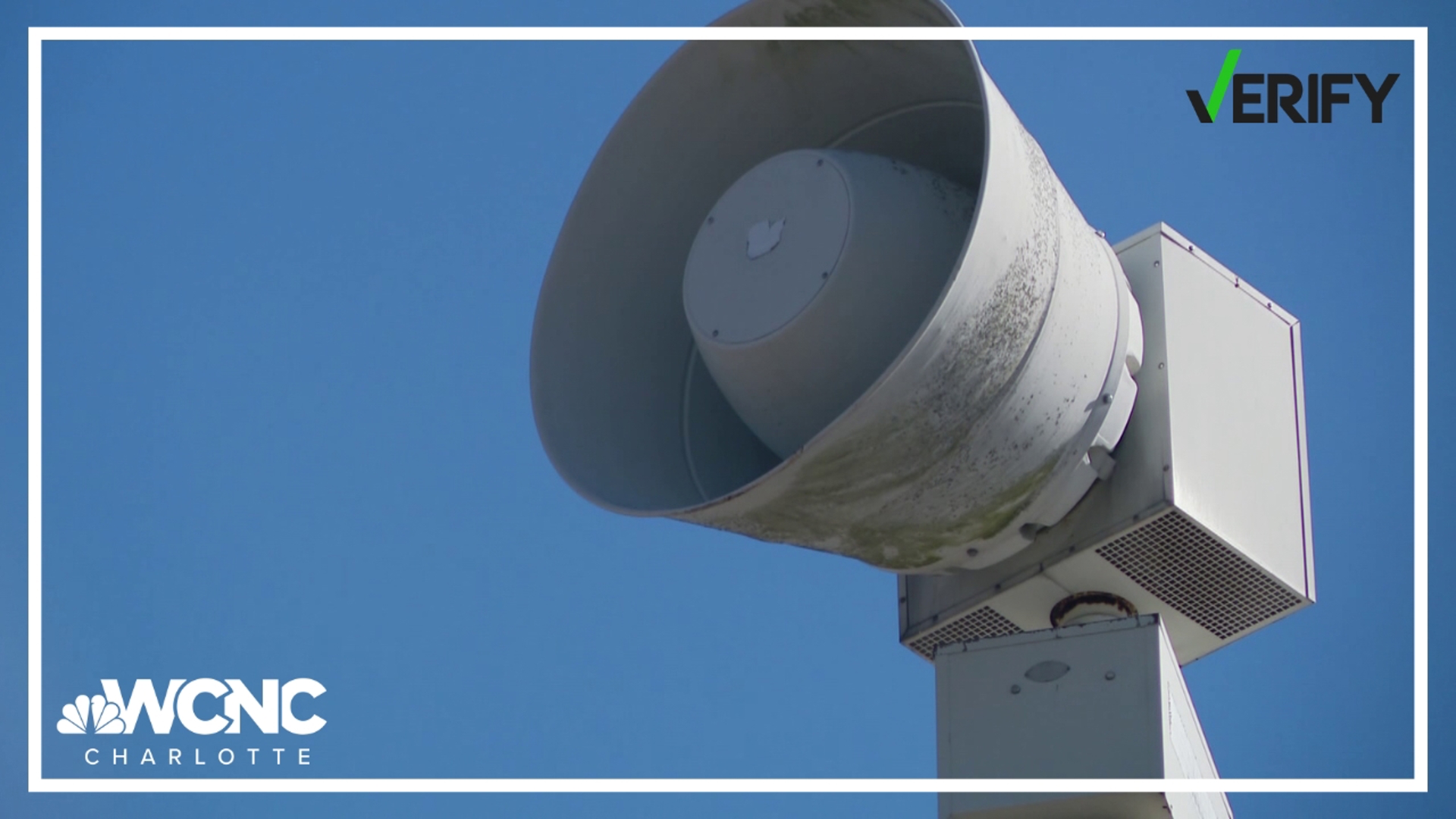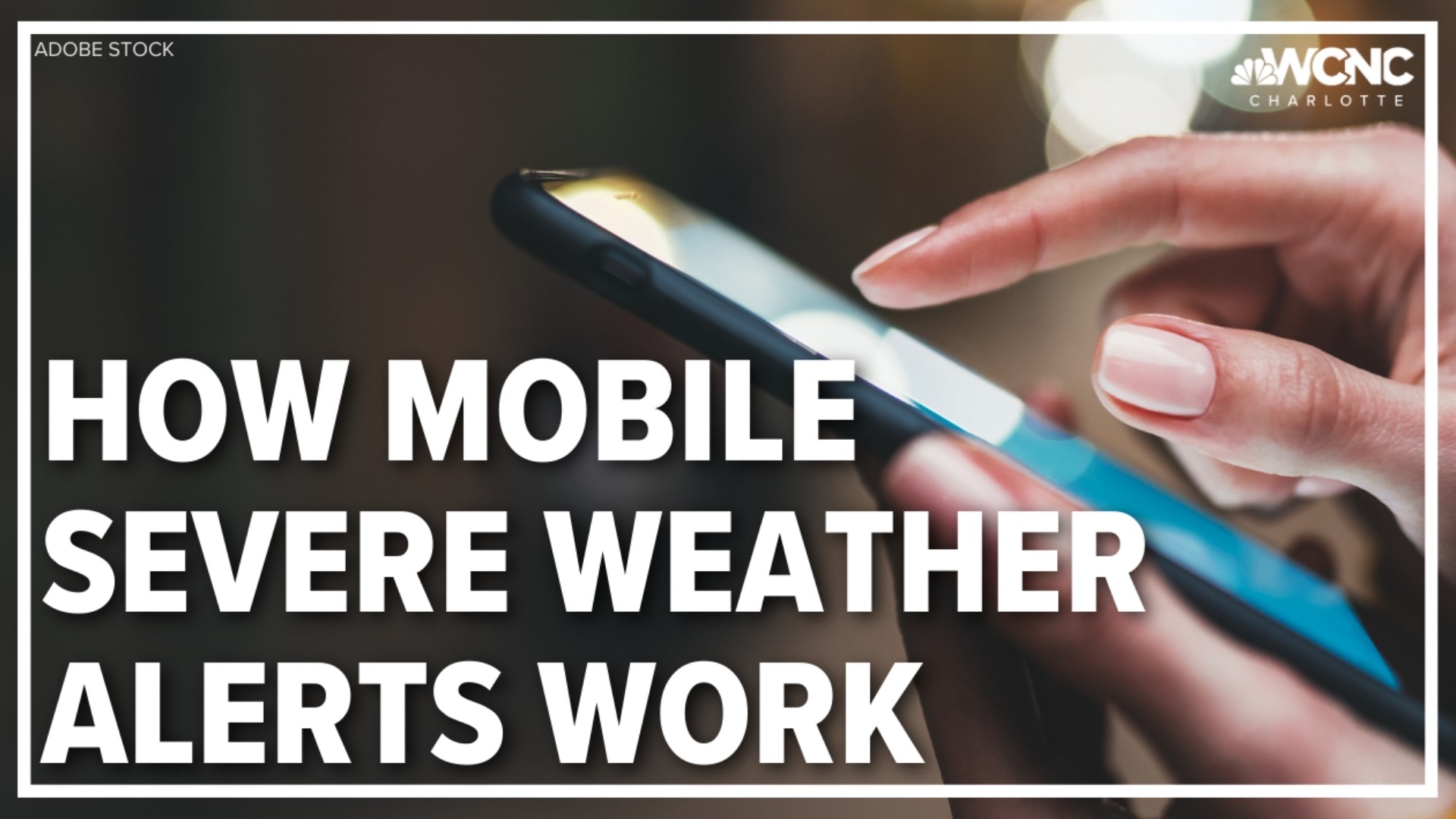YORK, S.C. — Nearly a week later, people in Rock Hill, South Carolina are still cleaning up damage from an intense hail storm.
This supercell thunderstorm produced winds up to 90 miles per hour and moved across York County late Saturday afternoon. Surveyors found the storm produced hail stones at least 2 inches in diameter. Some people are wondering why they didn't get a notification on their phone or hear sirens ahead of the storm.
"It happened all of a sudden. I had no clue anything was coming," Richard Molck, from York County, said.
Molck and his family were watching NASCAR outside his father's home when the storm hit.
"Oh my god, I'm a big man, and it took everything in me to hold that umbrella up," he said. "I was bracing myself against the deck."
That's why he is asking us this question: "Why didn't the sirens go off?"
He's also wondering why he didn't get a notification on his phone.
OUR SOURCES:
York County told us when the National Weather Service issues a tornado warning for their county, that's when sirens will sound.
A tornado warning was never issued for this storm, therefore, York County's sirens did not go off.
The National Weather Service has a three-tiered severe thunderstorm warning system called "impacted-based warnings."
RAISE YOUR WEATHER IQ: Understanding impact-based warnings
The most severe tier is "destructive," according to the National Weather Service. These storms have winds of 80 mph or greater and hail the size of baseballs. Storms identified within this tier will activate the Wireless Emergency Alert System on any phone located within the warning area.
RAISE YOUR WEATHER IQ: This is when Wireless Emergency Alerts are sent to your phone
However, on Saturday the National Weather Service identified the Rock Hill storm within the "considerable" tier, which is one level lower than destructive.
Storms that are ranked considerabe do not activate the Wireless Emergency Alert System.


From what the National Weather Service told WCNC Charlotte Chief Meteorologist Brad Panovich, it now sounds like they are second-guessing that decision.
"It's a difficult thing to do to pull that alarm and say this is very catastrophic. It was under consideration, and in the end, it wasn't, and maybe it should have been," Steve Wilkinson, the meteorologist in-charge of the local National Weather Service office in Greenville-Spartanburg, said.
To receive wireless emergency alerts, including those for storms and amber alerts, go into the Settings of your phone and make sure the Wireless Emergency Alerts are enabled.
You can also download the WCNC Charlotte news app, which also provides timely weather alerts regardless of which tier they are designated by the National Weather Service. These alerts are only received when the app's push notification and location-tracking abilities are enabled.
VERIFY is dedicated to helping the public distinguish between true and false information. The VERIFY team, with help from questions submitted by the audience, tracks the spread of stories or claims that need clarification or correction. Have something you want VERIFIED? Text us at 704-329-3600 or visit VERIFY.
Contact Meghan Bragg at mbragg@wcnc.com and follow her on Facebook, X and Instagram.
WCNC Charlotte's Verify series is all about trying to make a difference in the Carolinas by making sure the community has the correct information. WCNC Charlotte outlines concisely what we know and what we don't know. Sometimes the answer can be surprising. Watch previous stories where we verify social media claims in the YouTube playlist below and subscribe to get updated when new videos are uploaded.


